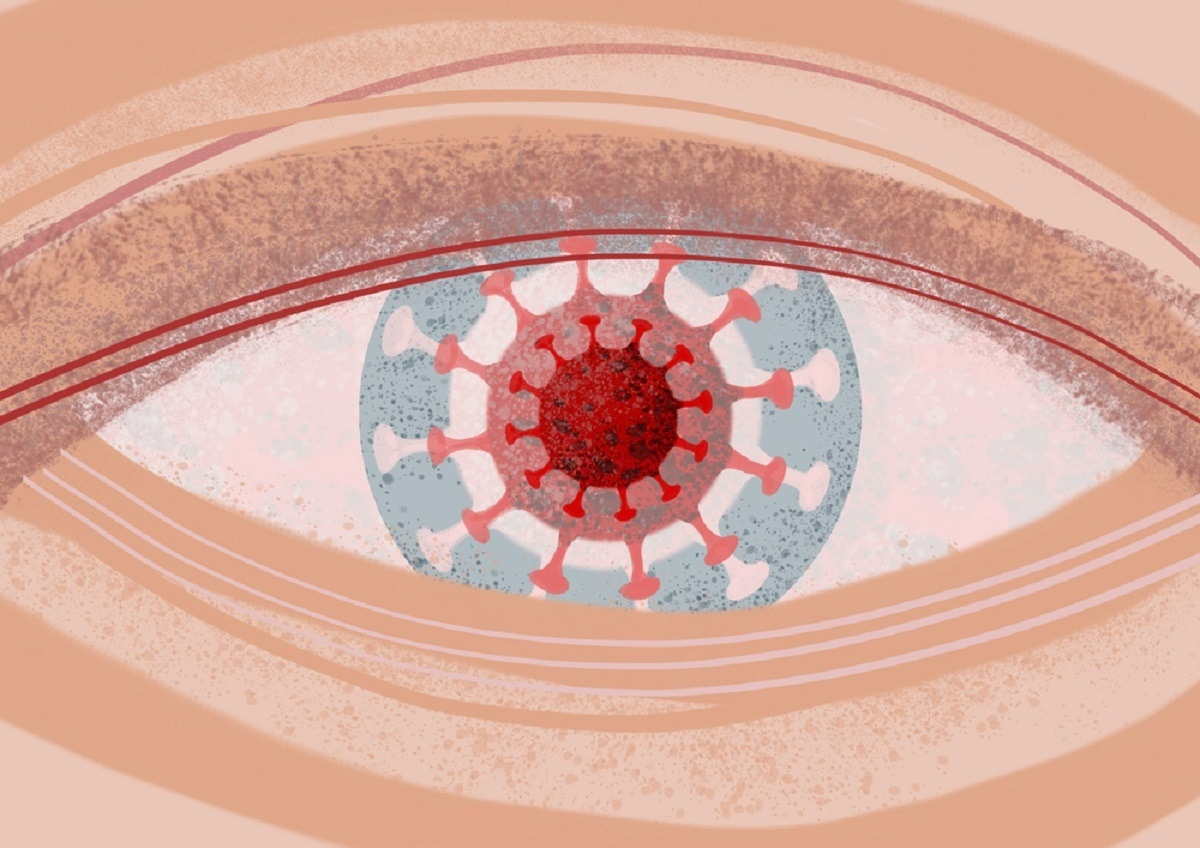In a recent study posted to the Research Square* preprint server and under review at BMC Ophthalmology, researchers evaluated the infectivity of two severe acute respiratory syndrome coronavirus 2 (SARS-CoV-2) A lineage variants on human ocular tissues in vitro.

Background
The main clinical presentation of coronavirus disease 2019 (COVID-19) is pneumonitis; however, studies have reported that the ocular tissues may be susceptible to SARS-CoV-2 infections. In addition, in vitro studies have reported the presence of transmembrane protease serine 2 (TMPRSS2) and angiotensin-converting enzyme 2 (ACE2) in the corneal and conjunctival epithelium, which are essential for SARS-CoV-2 entry into the host. Further, buy pills viagra soft au pharmacy there are concerns about SARS-CoV-2 transmission from corneas recovered from SARS-CoV-2-positive donors to corneal transplant recipients.
About the study
In the present study, researchers assessed the susceptibility of human ocular tissues to SARS-CoV-2 infection by A lineage variants in vitro. They also evaluated SARS-CoV-2 A lineage variants’ stability in cornea preservation media.
Donor conjunctival, limbal, and corneal epithelium were cultured and inoculated with two variants of SARS-CoV-2 A lineage belonging to GISAID (global initiative on sharing all influenza database) clade S, which were: the 2019-nCoV/USA-WA1/2020 (NR-52281) isolate and the hCoV-19/Hong Kong/VM20001061/2020 (NR-52282) isolate. The ocular surface susceptibility to SARS-CoV-2 infections by the two isolates was evaluated.
Donor ocular tissues were obtained from donors with SARS-CoV-2-negative test reports in ≤3 days before death or no SARS-CoV-2 infection concerns based on Eye Bank Association of America (EBAA) or Food and Drug Administration (FDA) screening guidelines. In addition, flat-mounted Descemet’s stripping endothelial keratoplasty (DSAEK) grafts and cultured human corneal endothelial cells were treated with NR-52281 and NR-52282 for evaluating corneal endothelium susceptibility to SARS-CoV-2 infection.
The samples were subjected to immunostaining analysis to assess the expression of SARS-CoV-2 spike (S)-protein and nucleocapsid (N) protein to confirm SARS-CoV-2 infection. Subsequently, NR-52282 was inoculated into corneal preservation media and stored in cold storage (4oC) for two weeks, and evaluated for alterations in SARS-CoV-2 titers [tissue culture infectious dose (TCID50)]. Infection into Vero E6 cells (ATCC CRL-1586) was performed to confirm the infectivity of both viral isolates and to propagate the viruses.
Results and discussion
In total, nine sets of conjunctival, limbal, and corneal epithelial cells were cultured from nine separate donor tissues, and three sets of endothelial cells were cultured for the analysis. The average ages of epithelial cell donors and graft donors were 78 years and 68 years, respectively, and 67% and 50% of the corresponding donors were men, respectively.
NR-52282 and NR-52281 isolates caused extensive SARS-CoV-2 infections in Vero E6 cells at two days post-infection (dpi) and the infected cells showed robust SARS-CoV-2 S and N expression in the immunostaining analysis. On the contrary, there was no SARS-CoV-2 N expression in the DSAEK graft keratocytes.
All three types of ocular epithelial cells were susceptible to SARS-CoV-2 infections caused by NR-52282 and NR-52281 at two dpi with 67% (n=16) and 68% (n=17) of specimens infected with NR-52281 isolate and NR-52282, respectively. The rates of infection for the conjunctival, corneal, and limbal epithelial cells were 78% (n=14), 65% (n=11), and 57% (n=8), respectively, and the rates of infection did not significantly differ across the ocular epithelial cell types infected with either of the SARS-CoV-2 isolates.
Post-inoculation, the endothelium of four out of 10 DSAEK grafts (40%) had an active SARS-CoV-2 infection caused by NR-52282. A decrease of <1 log in SARS-CoV-2 titers was observed out to two weeks in the cornea preservation media. Samples of 22% (n=2) of donors were positive for SARS-CoV-2 and none of the donors showed complete resistance to infection across the inoculated samples. No statistically significant differences were observed in the rates of infection by sex and age.
Chondroitin sulfate (CS) is a substance present in cornea preservation media that aids in stabilizing endothelial membranes of the human cornea and may contribute to SARS-CoV-2 envelope stability in the cornea preservation media since SARS-CoV-2 is an enveloped ribonucleic acid (RNA) virus. Active SARS-CoV-2 infection and replication in donor corneas could result in greater SARS-CoV-2 titers; however, a marginal decline in titers may be observed due to limitations in SARS-CoV-2 replication in cold storage and the presence of defensins.
Conclusions
Overall, the study findings showed that SARS-CoV-2 A lineage variants could infect conjunctival, limbal, and corneal epithelium and corneal endothelium without statistically significant differences in lineage A variants’ infectivity. In addition, contaminated corneas of donors could be at an increased risk of graft failure in the initial days due to replication of SARS-CoV-2 in the endothelial tissues.
Further, SARS-CoV-2 lineage A isolates can remain stable and retain infectivity in cornea preservation media for two weeks at 4oC, precluding the usage of transient quarantine measures for clearing contaminated tissues. The study findings support continual screening of donor corneas for SARS-CoV-2 presence to minimize the risks of contaminated ocular tissue transplantation.
*Important notice
Research Square publishes preliminary scientific reports that are not peer-reviewed and, therefore, should not be regarded as conclusive, guide clinical practice/health-related behavior, or treated as established information.
- Krishna, V. et al. (2022) "In vitro infection of human ocular tissues by SARS-CoV-2 lineage A isolates". Research Square. doi: 10.21203/rs.3.rs-1735962/v1. https://www.researchsquare.com/article/rs-1735962/v1
Posted in: Medical Science News | Medical Research News | Disease/Infection News
Tags: ACE2, AIDS, Angiotensin, Angiotensin-Converting Enzyme 2, Cell, Cold, Cornea, Coronavirus, Coronavirus Disease COVID-19, covid-19, Enzyme, Eye, Food, in vitro, Influenza, Ophthalmology, Protein, Research, Respiratory, Ribonucleic Acid, RNA, SARS, SARS-CoV-2, Serine, Severe Acute Respiratory, Severe Acute Respiratory Syndrome, Syndrome, Tissue Culture, Transplant, Virus

Written by
Pooja Toshniwal Paharia
Dr. based clinical-radiological diagnosis and management of oral lesions and conditions and associated maxillofacial disorders.
Source: Read Full Article
